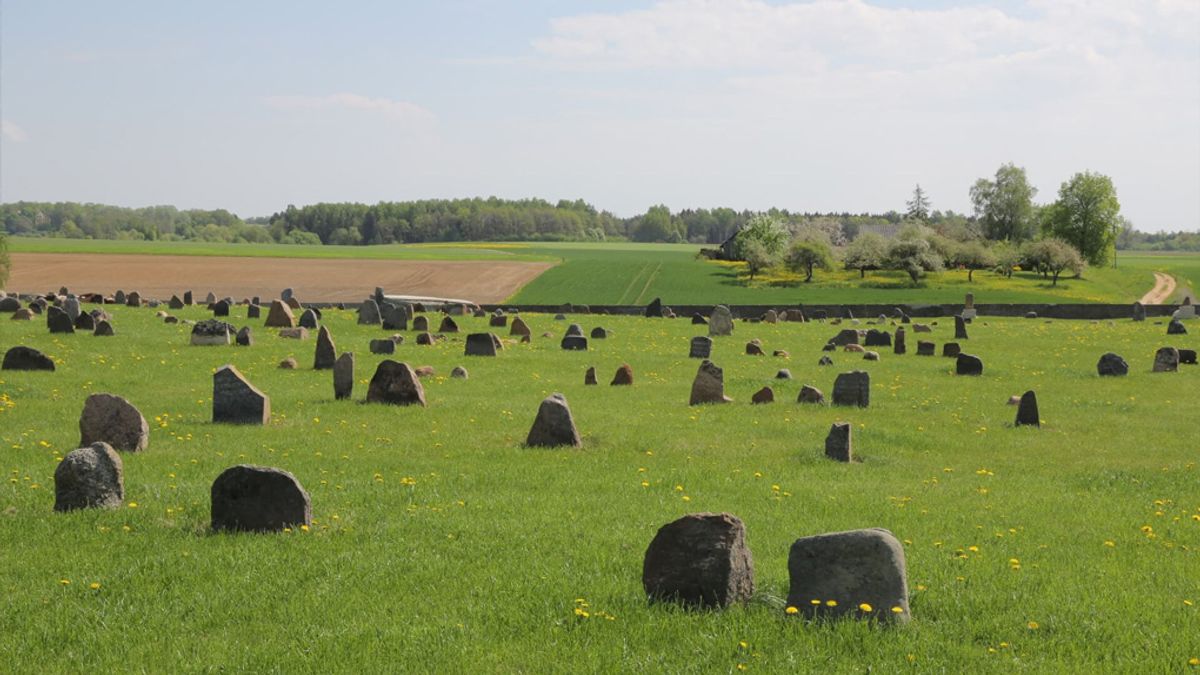Jewish cemetery and holocaust sites


The cemetery was restored and the killing sites around the town were properly marked to remember the lost community
Some Šeduva Jews rest in the Jewish cemetery established on the edge of town, where Jews were buried until World War II. Most of the Jews who lived in Šeduva between the two World Wars, however, are buried at killing sites in the forests of Liaudiškės and Pakuteniai, just outside Šeduva.
“He loved and studied the Torah with all his heart and trained his mind to do good. He dedicated his strength to supporting the deserving and helping the needy. It is impossible to mention all of his good deeds.“ So reads the gravestone of Noah, son of Menashe, buried in Šeduva. For a long time, however, we knew nothing about him, just as we didn't know much about many other residents of Šeduva. We weren't able to read their names or the inscriptions on their headstones that provide important information about the Jews of Šeduva who lived in the shtetl before the Second World War.
The Jewish cemetery here was abandoned. Its brick fence was collapsing, and graves were covered by thick mounds of grass, obscuring all but the tops of the tombstones. Upon closer inspection, we saw that many of the markers had been overturned, and the ground was littered with rubbish and fragments of gravestones. Tombstones had been looted from the cemetery after the Holocaust and then polished and used for domestic purposes. Later, some of the stolen headstones which had fortunately not be repurposed were returned to the old Jewish cemetery in Šeduva. We arranged them into a new memorial composition since determining exactly where these monuments had once stood was no longer possible.
Old Jewish Cemetery in Šeduva before Its Restoration. Photo by Arūnas Baltėnas.
Crumbling Stone Fence before Its Restoration. Photo by Arūnas Baltėnas.
Old Jewish Cemetery in Šeduva before Its Restoration. Photo by Arūnas Baltėnas.
It took two years, but by 2013 the Šeduva Jewish cemetery had been restored, including: a cleanup of the cemetery grounds, reinforcing headstones, determining the names of the dead, restoring the stone fence and installing a new gate, and removing unnecessary bushes.
Stone Fence after its Restoration. Photo by Arūnas Baltėnas.
Fragments of Broken Tombstones Put Together into a Star-of-David Sculpture (Lapidarium). Photo by Arūnas Baltėnas.
As a result of this effort, we are now able to learn about the memory of Jews of pre-war Šeduva. Alongside the virtuous Noah are the graves of hundreds of other people from the town: renowned Torah scholars, ordinary men and women, beloved parents, mothers, sons, and daughters. Their headstones don't just display their names – they often include information about the lives of each individual: their professions, places of origin, and their status within the community.
The restoration of the cemetery received a Special Mention from the jury for the European Union Prize for Cultural Heritage at the Europa Nostra Awards in 2017.
Most of the Jews of interwar Šeduva, however, were not laid to rest in the old cemetery. Some 700 people – children and adults – are buried in the forests of Pakuteniai and Liaudiškės. The Šeduva Jewish community was exterminated over several days in the summer heat of August of 1941.
Killing Site in Liaudiškiai Forest before Its Restoration. Photo by Arūnas Baltėnas.
Killing Site in Liaudiškiai Forest before Its Restoration. Photo by Arūnas Baltėnas.
Killing Site in Pakuteniai Forest before Its Restoration. Photo by Arūnas Baltėnas.
We also found the killing sites abandoned and forgotten. So, we went to work again. From 2014 to 2015, we cleaned up the sites, improved access, put up road signs, and placed monuments to commemorate the victims. We did this in memory of the people of Šeduva whose lives were taken from them.
Road Signs Set Up by the Šeduva Jewish Memorial Foundation. Photo by Arūnas Baltėnas.
Monument “The Door.” Liaudiškiai Killing Site. Photo by Arūnas Baltėnas.
Monument “Sunray-Star.” Liaudiškiai Killing Site. Photo by Arūnas Baltėnas.
Monument “Dwelling of the Star of Light.” Pakuteniai Killing Site. Photo by Arūnas Baltėnas.
Whether buried in the cemetery or in ditches, these Jews of Šeduva are our neighbors who will forever rest in the embrace of Lithuania’s soil. We feel it is the duty of all of us to remember them.
Old Jewish Cemetery of Šeduva
Area: 1.3 ha.
Around 1,300 gravestones and fragments discovered.
800 headstones restored and reinforced.
400 graves identified.
Memorial composition: 16 headstones.
Oldest surviving grave: 1782
Most recent surviving grave: 1932
Restoration project prepared by studio of architect Algimantas Kančas.
Jewish killing sites in Šeduva
Date of massacre: August 25-26, 1941
Location: Liaudiškės and Pakuteniai forests.
Monuments: “Sunray-Star”, “The Door” and “Dwelling of the Star of Light” (2014-2015).
Sculptor: Romas Kvintas.